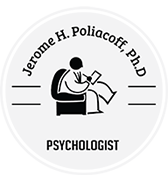The New York Times in posted two excellent “advice” columns – “……Choose Optimism” and “Zoomed Out?....”. Posted in early April, perhaps anticipating a longer shelter in place experience than the Federal government promised, the advice remains sound, even more so today.
Kristin Wong wrote “With the endless stream of urgent news pushing the boundaries of our mental health, it seems laughable to suggest optimism right now. Maybe you’re worried about losing your job, losing your home or losing a loved one. Maybe you already have. Maybe you’re worried about your own health, and maybe you feel helpless or doomed. Whatever it is, optimism feels like a luxury that few of us can afford.
But at its core, optimism doesn’t require you to sweep those anxious, negative feelings under the rug. It’s not about smiling when you don’t feel like it. Optimism is simply being hopeful about the future, even when the present feels wholly negative. Cognitively, this is a challenge, because it requires you to acknowledge your positive and negative emotions at once and to allow them to exist simultaneously. As hard as it may be to make the case for optimism during a time of crisis, that’s when it happens to be the most useful”.
“There is an extraordinary level of uncertainty right now, and that produces fear, despair, helplessness and anxiety, which are all understandable and appropriate under these circumstances,” said Stephanie Marston, a psychotherapist and a co-author, with her daughter Ama Marston, of the book “Type R: Transformative Resilience for Thriving in a Turbulent World.”
CLICK HERE to read more.


